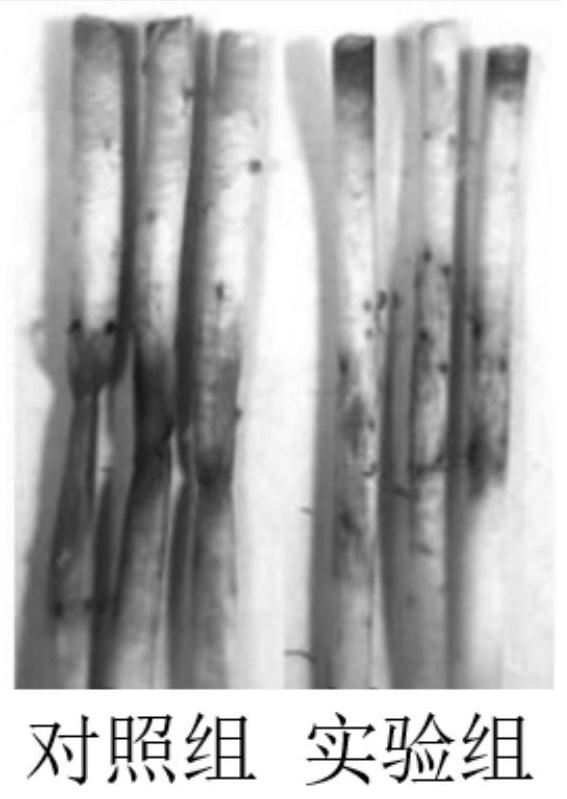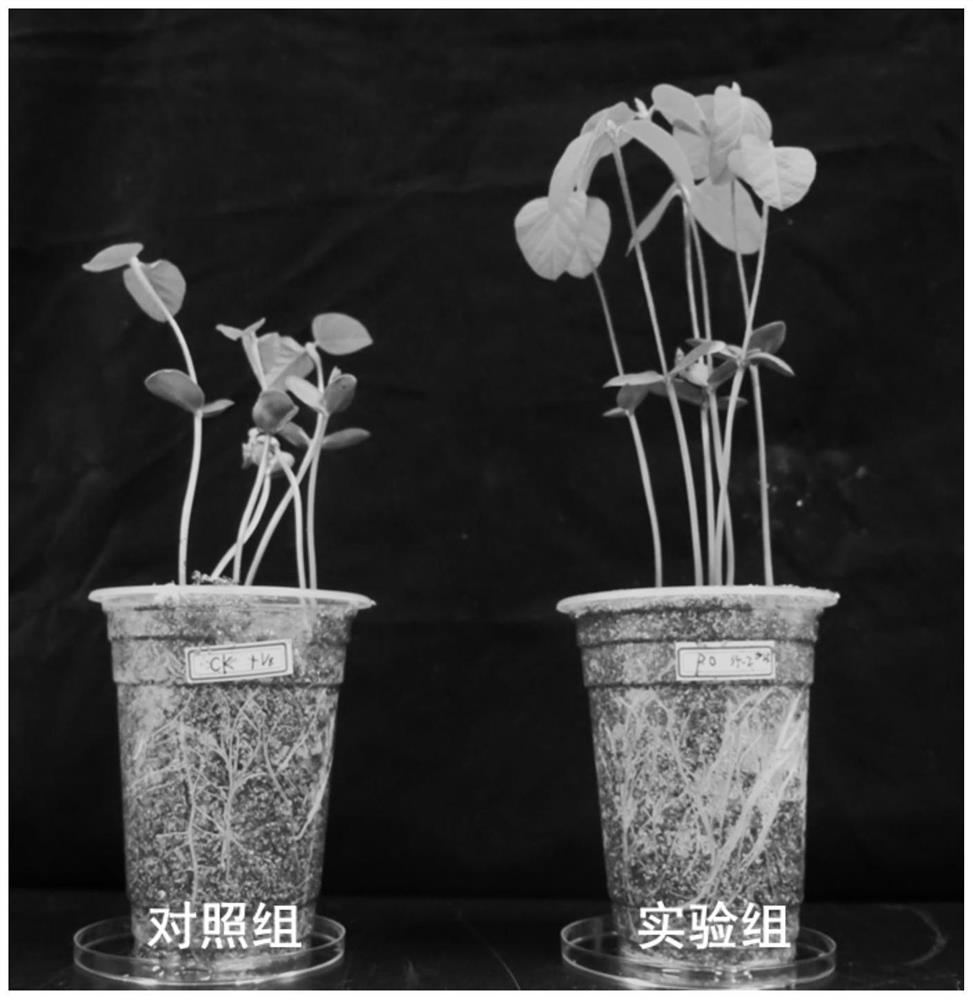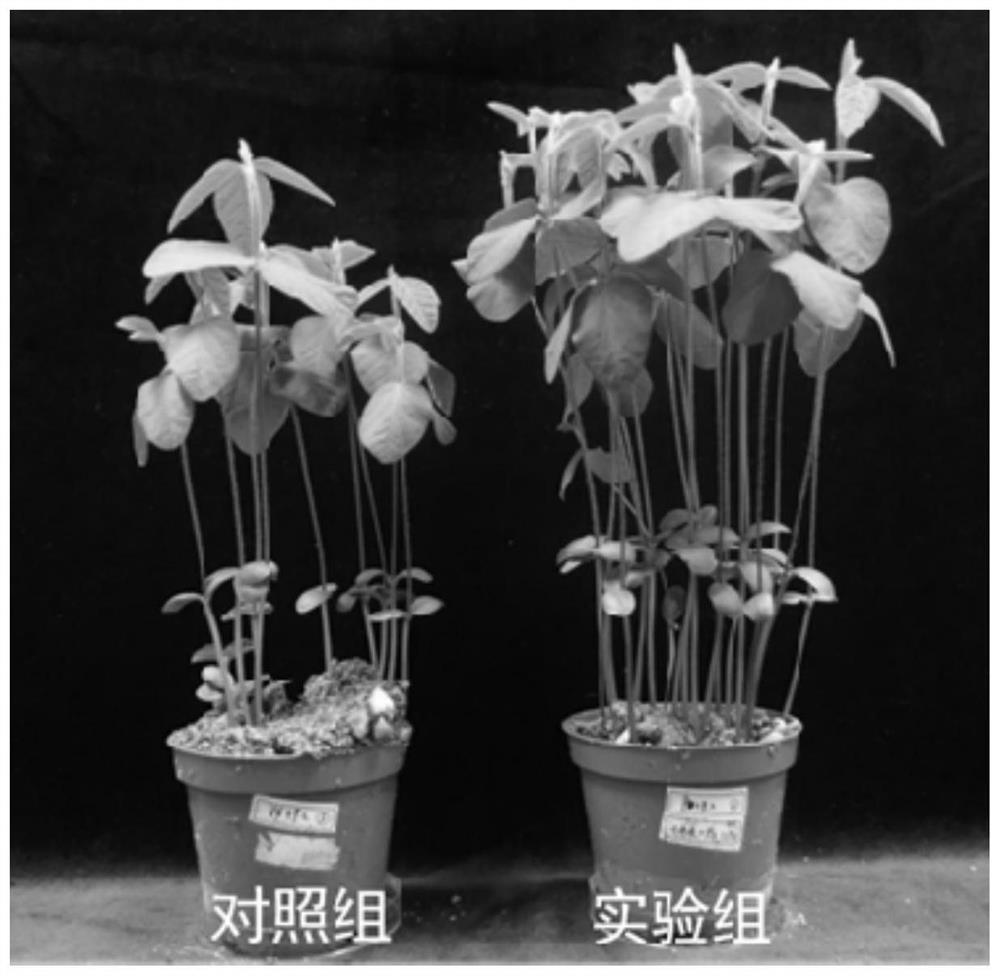Plant root rot biocontrol bacterium and application thereof
A technology of plant roots and biocontrol bacteria, applied in the direction of plant growth regulators, applications, plant genetic improvement, etc., to reduce the severity of diseases and increase plant yields
- Summary
- Abstract
- Description
- Claims
- Application Information
AI Technical Summary
Problems solved by technology
Method used
Image
Examples
Embodiment 1
[0057] The screening of embodiment 1 bacterium Pythium oligandrum Pyo34-3
[0058] 1. Primary screening: Isolation of potential biocontrol bacteria
[0059] 1.1. Acquisition of test materials: Select well-growing soybean plants from fields where root rot occurs all the year round (soybean fields in Jiangning District, Nanjing City), and get their root tissue and rhizosphere soil.
[0060] 1.2. Isolation and cultivation of soybean root microorganisms: cut the soybean root tissue, rinse it three times with sterile water, cut the cleaned root tissue into 0.5-1cm segments with a sterilized scalpel, and dry it with sterile absorbent paper The water on the surface of the root tissue was placed on the V8 agar solid medium containing ampicillin, rifampicin and pentachloronitrobenzene, and placed in an incubator at 25°C for 2 days.
[0061] 1.3. Isolation and cultivation of soybean rhizosphere soil microorganisms: Take 0.25 g of soil with sterilized tweezers, put it on the V8 agar sol...
Embodiment 2
[0084] The influence of embodiment 2 bacterium Pythium oligandrum Pyo34-3 on the root rot that different plant root rot pathogens cause
[0085] The inventor of the present invention has carried out the test of the influence of the bacteria Pythium oligandrum Pyo34-3 that a large amount of embodiment 1 screens causes to the root rot of different plant root rot pathogens, below with Phytophthora sojae, Pythium ultima, oxysporum Fusarium and Phomopsis are illustrated as examples.
[0086] 【Phytophthora soybean】
[0087] The test method for the influence of Pythium oligandrum Pyo34-3 on the plant root rot caused by Phytophthora soybean comprises the steps:
[0088] R1. Inoculate Pythium oligandrum strain Pyo34-3 and Phytophthora sojae P6497 into 9cm-diameter petri dishes containing 20mL and 10% unfiltered V8 medium, and culture them at 25°C for 4d and 7d in the dark, respectively. , until the strains are full of petri dishes;
[0089] R2. Select a pot with a diameter of 12 cm,...
Embodiment 3
[0119] Field test of embodiment 3 Pythium oligandrum Pyo34-3
[0120] Step 1. Inoculate the Pythium oligandrum strain Pyo34-3 in a 9cm-diameter medium containing 20 mL of 10% unfiltered V8 medium, and culture it at 25° C. in the dark for 4 days until it covers the petri dish.
[0121] Step 2: The substrate (soybean straw: soybean flour: vermiculite = 100:5:10) is sterilized at 121° C. for 20 minutes at high temperature, and after cooling, put it into a sterile solid fermentation bag with air holes. Each bag of matrix is 1500g.
[0122] Step 3: Cut the culture medium of Pythium oligandrum Pyo34-3 into small pieces of 0.5cm×0.5cm, inoculate two pieces in each bag of matrix, add sterile water to make the moisture content in the matrix reach 70%, and seal it Place it in an incubator at 28°C for 15 days in the dark to prepare the solid fermentation agent of Pythium oligandrum Pyo34-3.
[0123] Step 4, microscopic examination of the solid fermentation agent of Pythium oligandrum...
PUM
 Login to View More
Login to View More Abstract
Description
Claims
Application Information
 Login to View More
Login to View More - Generate Ideas
- Intellectual Property
- Life Sciences
- Materials
- Tech Scout
- Unparalleled Data Quality
- Higher Quality Content
- 60% Fewer Hallucinations
Browse by: Latest US Patents, China's latest patents, Technical Efficacy Thesaurus, Application Domain, Technology Topic, Popular Technical Reports.
© 2025 PatSnap. All rights reserved.Legal|Privacy policy|Modern Slavery Act Transparency Statement|Sitemap|About US| Contact US: help@patsnap.com



